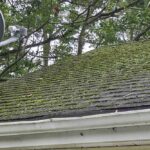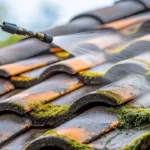As the world shifts towards sustainable living, the integration of eco roofing for tiny homes has become increasingly popular. These small-scale dwellings are not only energy-efficient but also serve as a canvas for innovative roofing solutions. Embracing eco-friendly roofing can significantly enhance the environmental footprint of your tiny home, offering benefits that extend beyond mere aesthetics.

What is Eco Roofing?
Eco roofing refers to the use of sustainable materials and designs that reduce environmental impact. This concept is especially suitable for tiny homes, where every inch counts, and efficiency is key. From green roofs to pollinator-friendly roofs, the options are vast and varied.
Benefits of Eco Roofing in Tiny Homes
Energy Efficiency
One of the primary advantages of eco roofing is its ability to enhance energy efficiency. By reflecting sunlight and providing insulation, these roofs help maintain a comfortable indoor temperature, reducing the need for artificial heating and cooling.
Environmental Impact
Eco roofs significantly reduce the carbon footprint by using recycled or sustainable materials. They also contribute to improved air quality and biodiversity.
Cost-Effectiveness
While the initial investment might be higher, the long-term savings on energy bills and maintenance make eco roofing a cost-effective choice for tiny homeowners.
Types of Eco Roofs for Tiny Homes
Green Roofs
Green roofs are covered with vegetation, offering excellent insulation and stormwater management. They are ideal for urban settings where green space is limited.
Solar Roofs
Solar panels can be integrated into the roofing system to harness renewable energy, providing power to the tiny home and reducing reliance on the grid.
Cool Roofs
These roofs are designed to reflect more sunlight and absorb less heat, keeping the home cooler and reducing energy consumption.
Materials Used in Eco Roofing
Materials like recycled metal, clay tiles, and sustainable woods are commonly used in eco roofing solutions. Each material offers unique benefits, such as durability, aesthetic appeal, and environmental friendliness.
Considerations for Installing Eco Roofs
Weight
Eco roofs, especially green roofs, can be heavier than traditional roofing. It’s essential to ensure that the tiny home structure can support the additional weight.
Climate Suitability
The local climate plays a crucial role in determining the most suitable type of eco roof. For instance, solar roofs are more effective in sunny climates.
Budget
While eco roofing offers long-term savings, the initial cost can be higher. Planning and budgeting are crucial to ensure the project is financially viable.
Challenges and Solutions
Maintenance
Regular maintenance is necessary to keep eco roofs in optimal condition. This includes cleaning, inspections, and repairs. Hiring professionals or dedicating time to DIY maintenance can address this challenge.
Installation Expertise
Finding contractors with experience in eco roofing can be challenging. Researching and consulting with experts can ensure a successful installation.
Conclusion
Eco roofing for tiny homes offers a sustainable and efficient solution for those looking to minimize their environmental impact. With the right materials and design, tiny homeowners can enjoy energy savings, improved aesthetics, and a reduced carbon footprint.

FAQs
What is the lifespan of eco roofs?
Eco roofs can last between 30 to 50 years, depending on the materials and maintenance practices. For more information, you can visit this link.
Are eco roofs suitable for all climates?
Yes, but the type of eco roof should be chosen based on the local climate to ensure maximum efficiency.
How do eco roofs impact property value?
Eco roofs can increase property value by enhancing energy efficiency and aesthetic appeal, making homes more attractive to potential buyers.
For additional insights on sustainable roofing, you may refer to this resource.
This article contains affiliate links. We may earn a commission at no extra cost to you.








